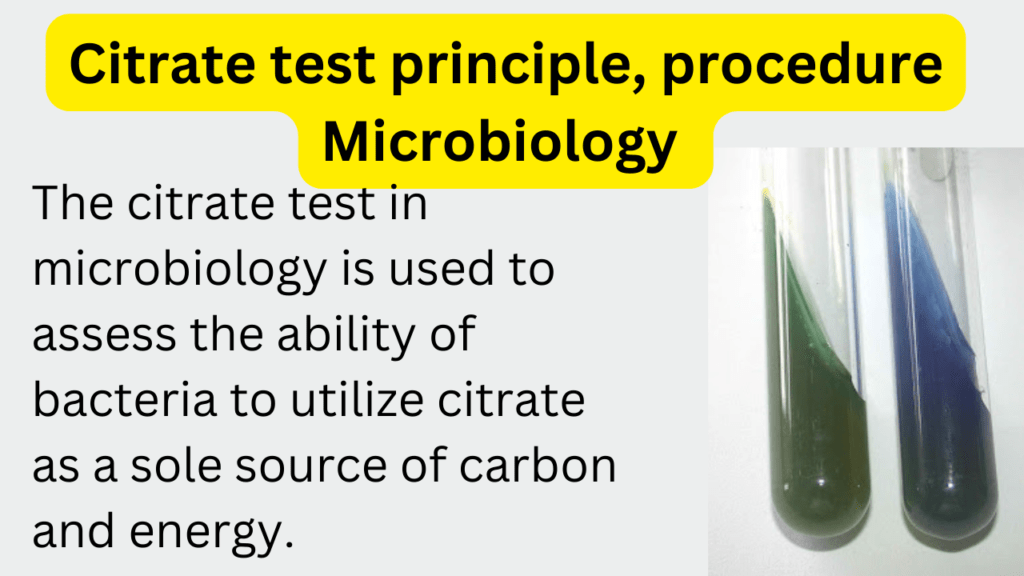The citrate test in microbiology is used to assess the ability of bacteria to utilize citrate as a sole source of carbon and energy.

It plays a crucial role in the identification and classification of bacteria, particularly in clinical and research settings.
Principle of Citrate Test
The citrate utilization test is based on the ability of certain bacteria to metabolize citrate through the enzymatic action of citrate-permease and citrate lyase.
Citrate is an organic acid that contains carbon as a carbon source, and bacteria that can utilize citrate can grow in a medium containing citrate as the sole carbon source.
Citrate Test procedure microbiology
The citrate utilization test is relatively straightforward and involves the following steps.
- Sterilize the inoculating loop by heating it until it turns red hot. Allow it to cool down before use.
- Streak a loopful of the bacterial culture onto the slant surface of a Simmons citrate agar.
- Incubate the inoculated slant at 35-37°C for 18-24 hours.
- Observe the color change of the medium. A positive result is indicated by a change from green to blue, which signifies that the bacterium has utilized citrate.
Citrate Test Result Interpretation
- Positive Result: If the medium turns blue, it indicates that the bacterium has the ability to utilize citrate as a carbon source.
- Negative Result: If the medium remains green, it suggests that the bacterium cannot utilize citrate.
Purpose of citrate test
The citrate utilization test serves several important purposes in microbiology:
- Bacterial Identification: It aids in the differentiation of bacterial species. For example, it is commonly used to distinguish between members of the Enterobacteriaceae family, such as Escherichia coli (negative) and Citrobacter species (positive).
- Clinical Applications: The test is useful in clinical microbiology for identifying pathogens and guiding treatment decisions. It helps in determining the pathogenic potential of isolated bacteria.
- Research: In research, the citrate utilization test can be part of broader studies on bacterial metabolism and ecology. It provides insights into the metabolic capabilities of different bacterial species.
- Quality Control: In the food and beverage industry, the test is used to assess the quality and safety of products by detecting citrate-utilizing bacteria that may spoil or contaminate them.
2 thoughts on “Citrate test principle, procedure, result, purpose”